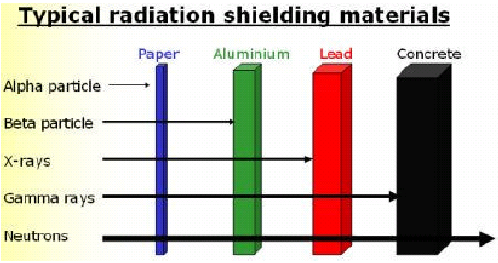
With the technological advancement, the properties required for conventional materials have undergone changes. Leading it to the appearance of materials capable of meeting the intended requirements of new technologies. The chemical and structural combination of different materials produced a new class of engineering products.
The growing concern with the environment and with the reduction of manufacturing costs together with the reintroduction of natural fibers in reinforced composite technologies gave rise to new developments. With technological advances, the requirements for common materials have changed, which has led to the appearance of composites capable of meeting new needs such as Radiation shielding.
The bright market for composite materials!
The success of composites in different applications depends on the ease of access and application of the manufacturing techniques required by each industrial sector. Increasingly, the manufacture of composites is a procedure that aims to achieve optimal values of parameters such as shape, mass, strength, durability, rigidity, costs, etc.

Currently, composite material markets are increasingly widespread. Recent studies show that the largest market remains that of transport (31%), but civil construction (19.7%), marine (12.4%), electrical / electronic equipment such as gamma ray shielding products (9.9%), consumption (5.8%), commercial appliances and equipment are also booming markets. The aerospace and aircraft market represents only 0.8%.
Definition of Thermoplastic Composite Material
Composite materials do not have a universally accepted definition. In general, a material is said to be composite when it consists of two or more different constituents. Techniques for manufacturing these materials have been developed in order to replace metallic, ceramic and polymeric alloys that meet new technological requirements.
The matrix phase can be a metal, a polymer or a ceramic, which gives structure to the composite material, filling in the empty spaces that remain in the reinforcement and keeping it in position.
Composite Materials in Industry
The growing demand for new technologies has led to the appearance of new materials. Composites are a class of these materials that have several applications in the industry. These materials are increasingly used as substitutes for conventional materials as they have advantages such as –
• High rigidity and specific modulus.
• High resistance to corrosion and thermal conductivity.
• Good fluidity, structural stability.
• And easy molding.
Thermoplastics have the advantage of softening, instead of melting during heating, re-hardening after cooling. These processes are fully reversible and can be repeated a number of times. This property of thermoplastics facilitates applications in conventional compression techniques for molding compounds.

In addition, thermoplastics are relatively soft and ductile, and can remain in a particular state for long periods of time, which makes these materials very flexible. Many investigations in this area have been made. Namely with regard to improving its properties to obtain greater functional advantages
The thermosets become permanently hard when subjected to heat and do not soften with subsequent heating. They are generally harder, more resistant and more fragile than thermoplastics. Polymers are used in the widest range of thermoplastic composite applications such as Radiation Shielding Materials since they have advantageous mechanical properties, low weight, as well as easy manufacturing processes and reduced cost.






0 comments:
Post a Comment